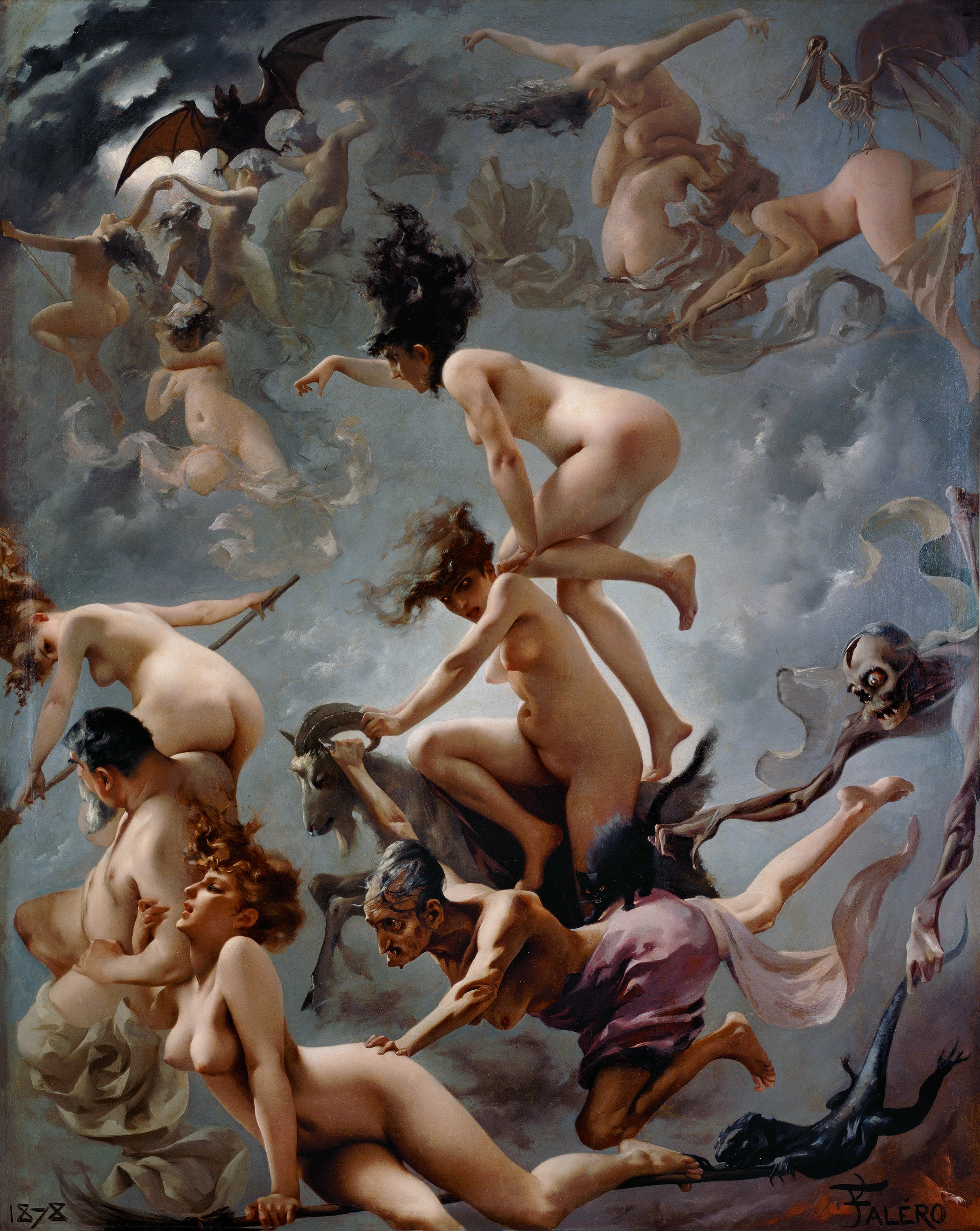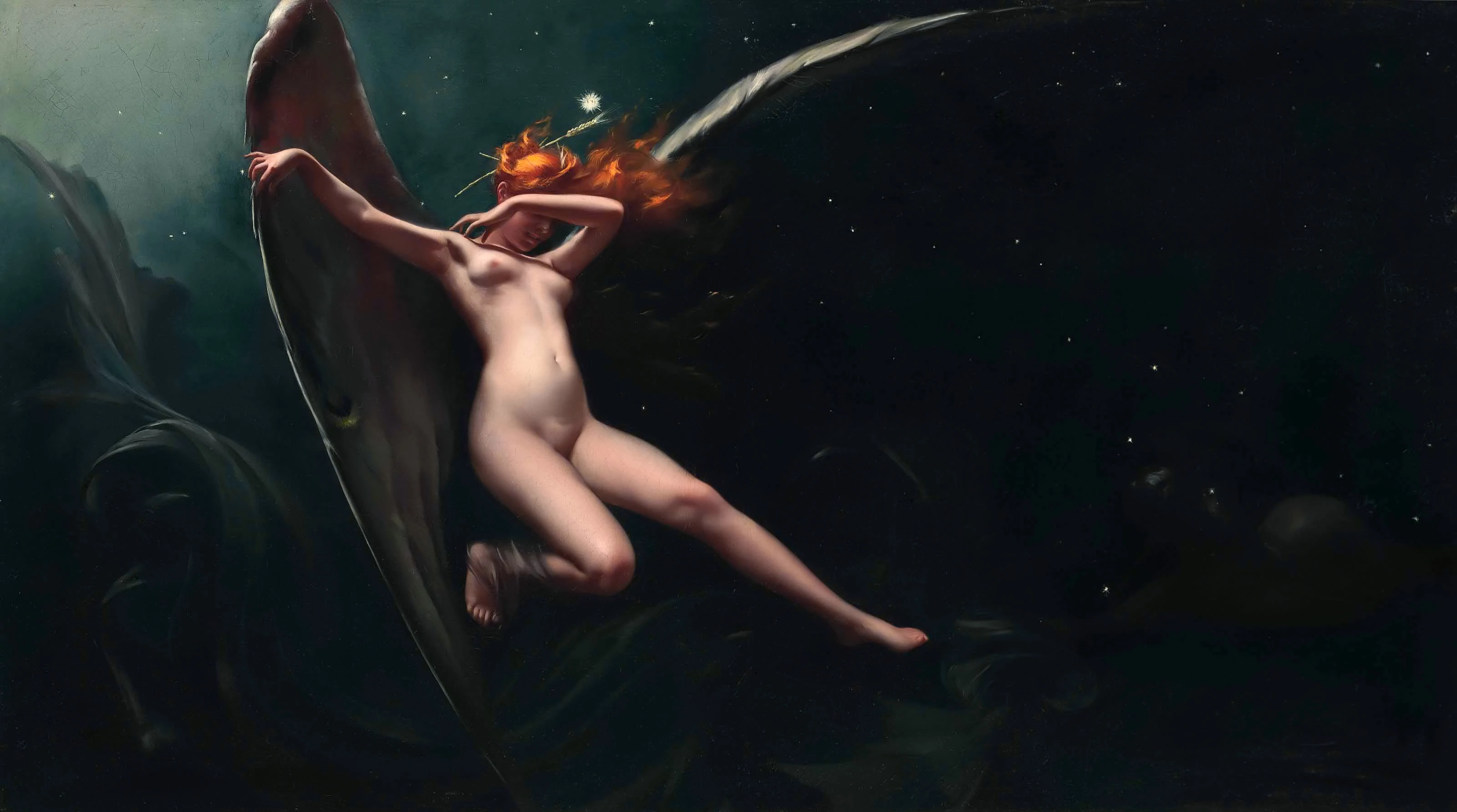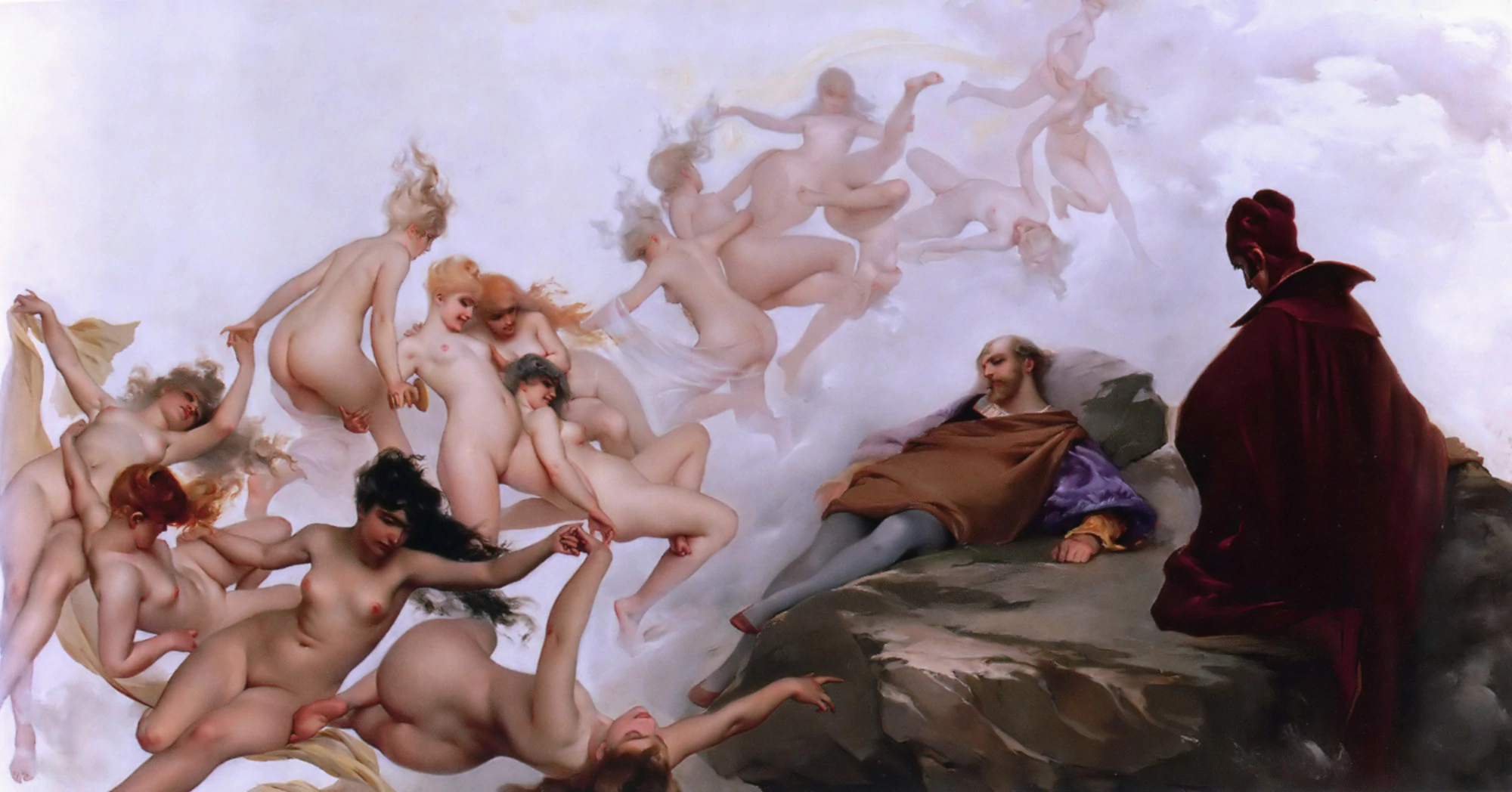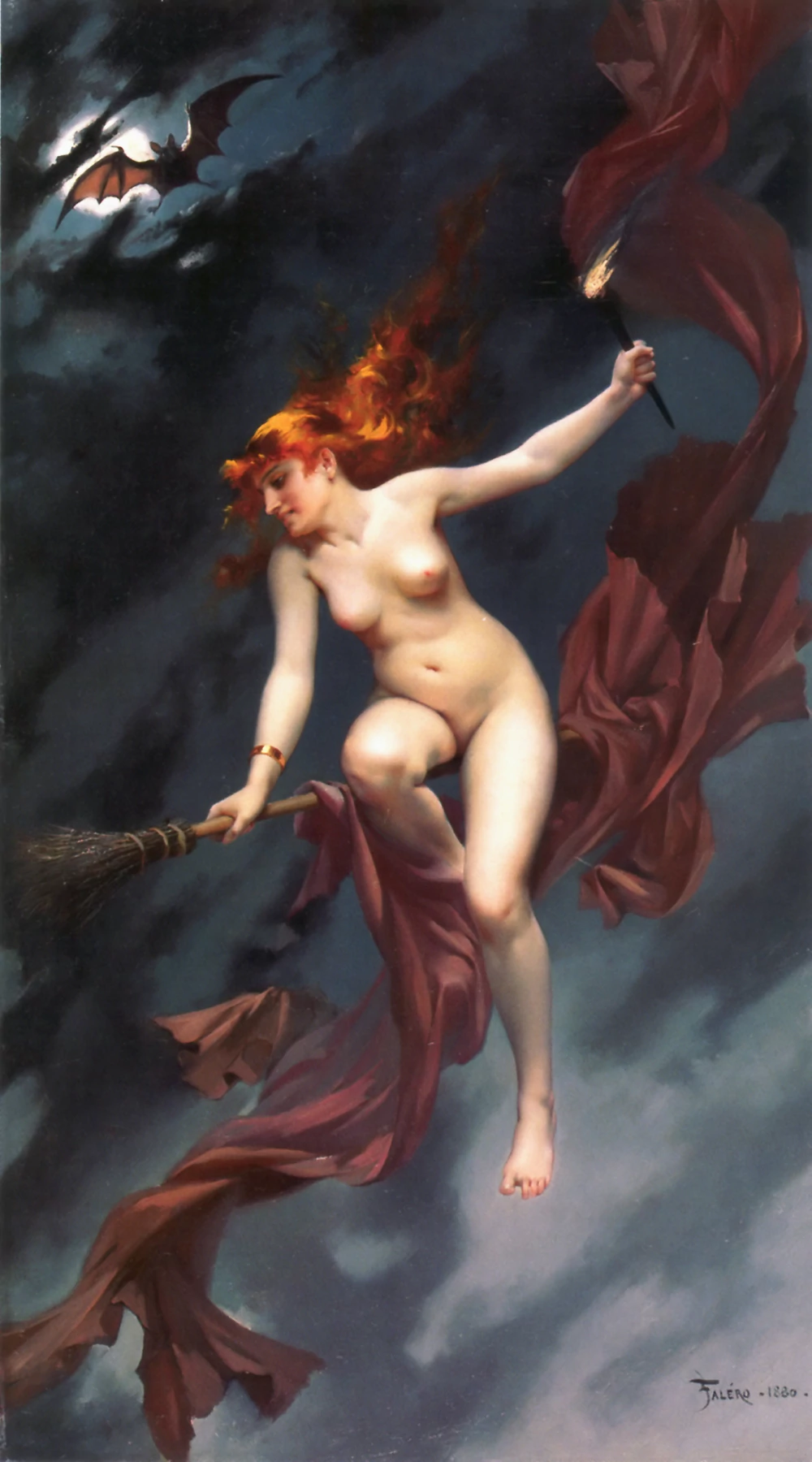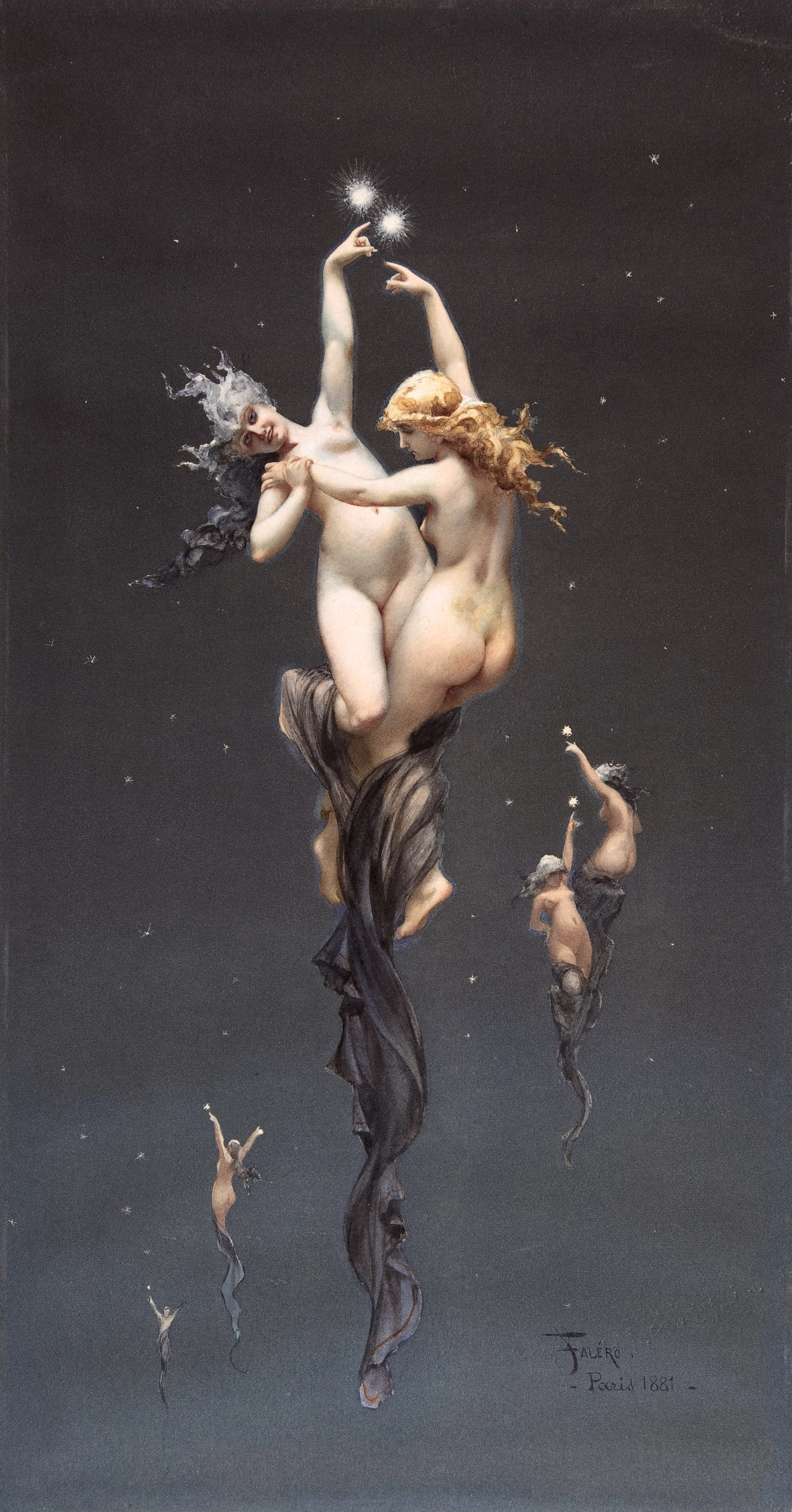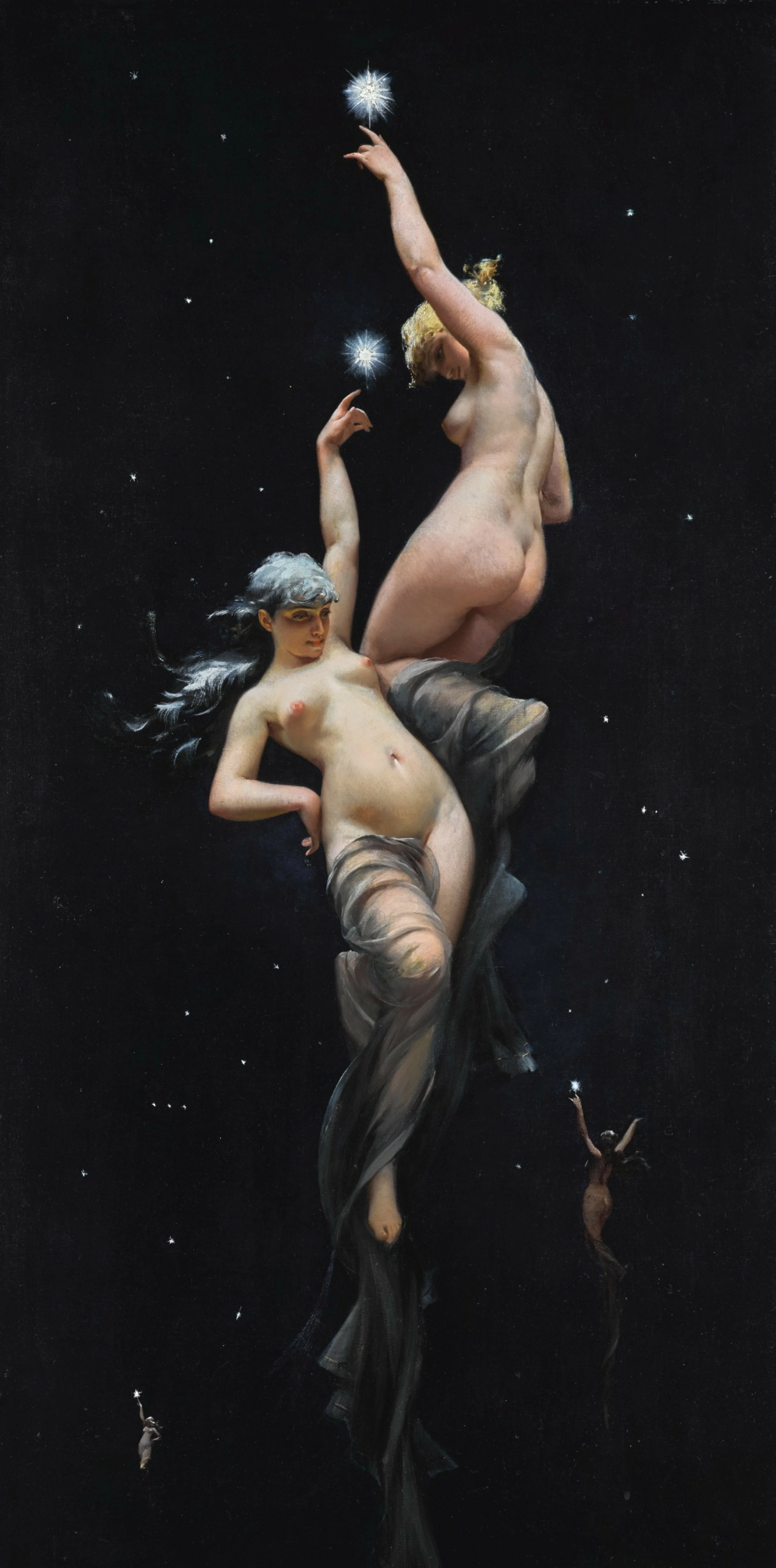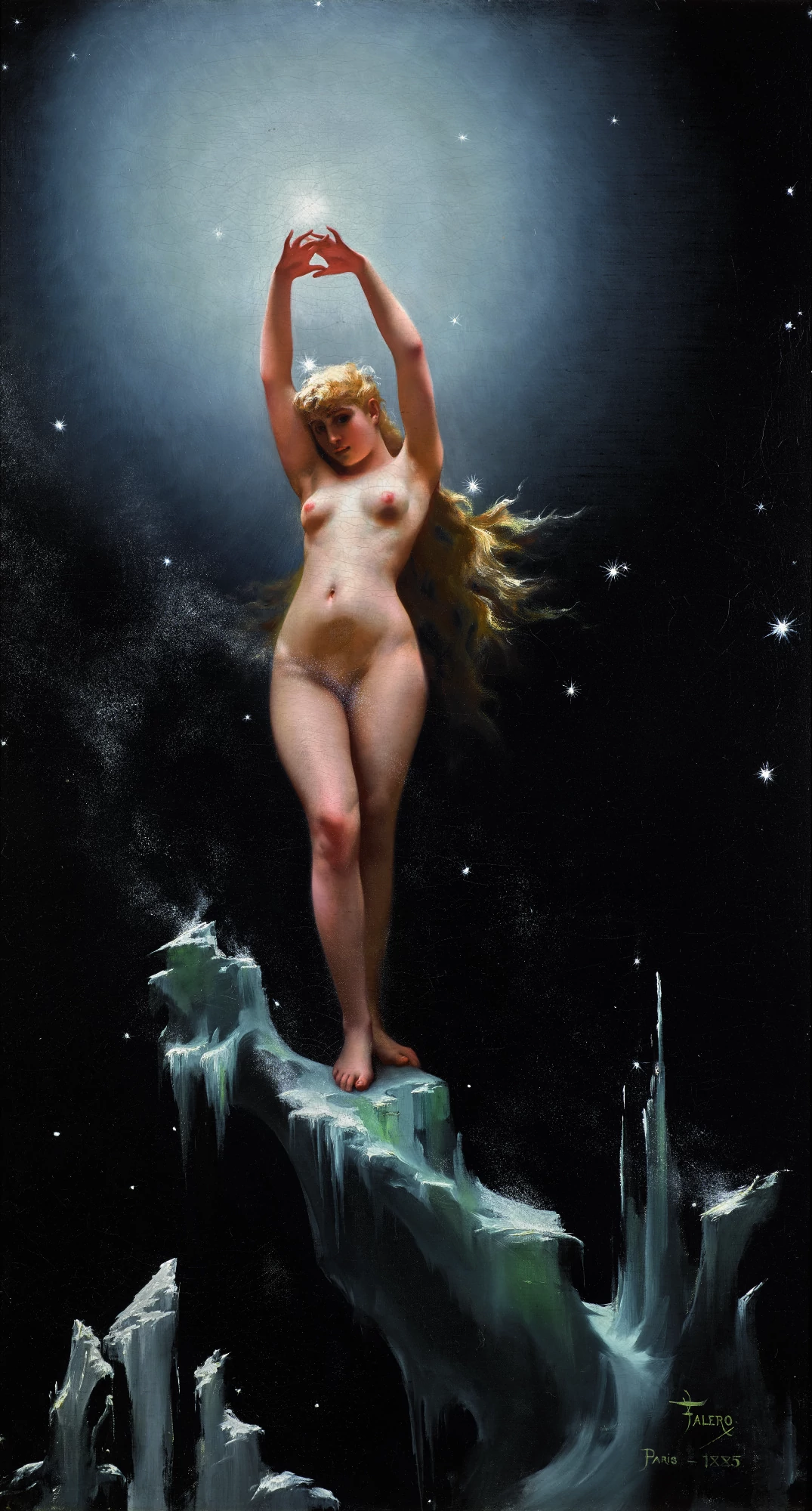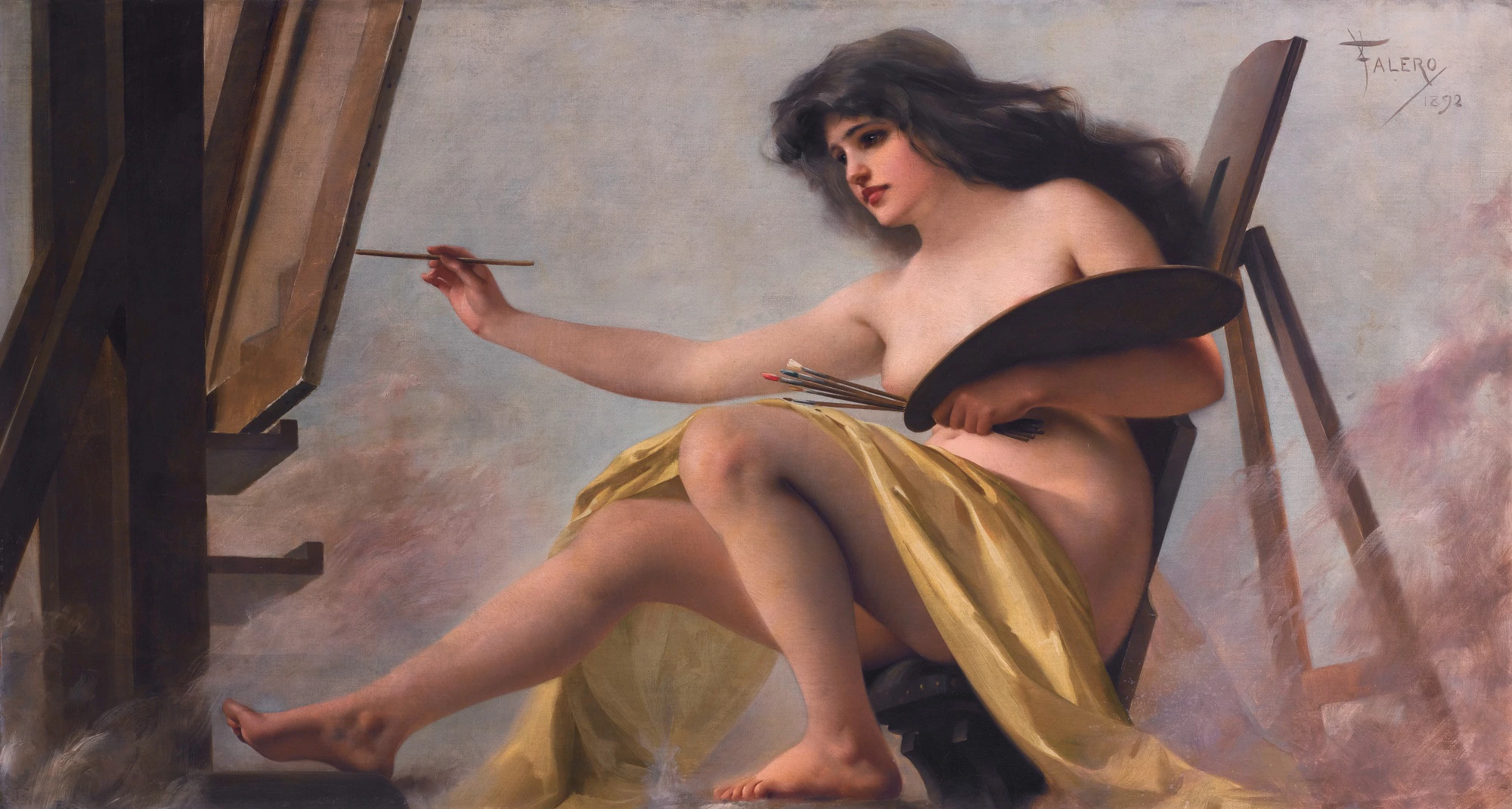Luis Ricardo Falero
The line between art and sex
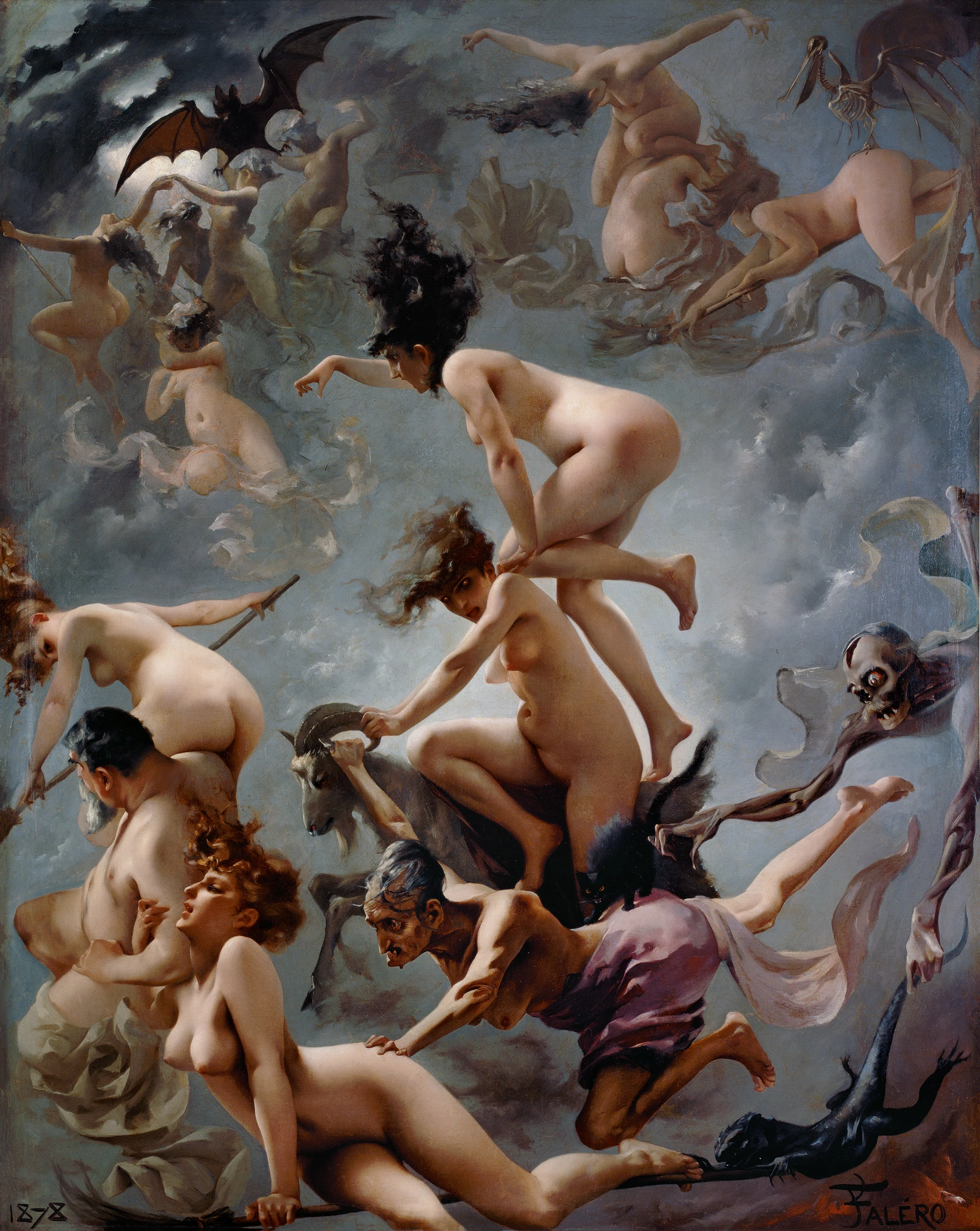
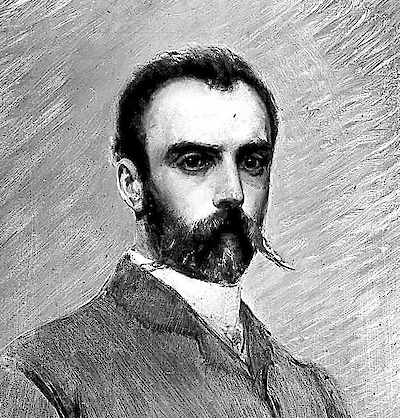


Luis Ricardo Falero, the Duke of Labranzano, has been hidden from history. Falero was not an unknown artist in his day. He showed work in both the academic and independent Salons in Paris, exhibited at the Royal Academy of Arts in London, and the Glasgow Herald called his painting The Nightmare “the most remarkable and sensational work ever exhibited in England.” Yet it’s nearly impossible to find salient details on the man.
No biographies of Falero are listed on Amazon or Google Books. The MET owns a drawing by Falero, but it has no lot essay, and it’s not on view. Christies, usually a font of biographical info and historical context, hesitantly mentions Falero’s “anatomical dexterity” in depicting his models and moves on. The British Museum’s nearly empty profile for Falero contains only the terse summary “painter of female nudes,” and the only related entry with an image is a hand-signed invitation to a private viewing of his most famous work—The Nightmare. Searching for images of the artwork the Nightmare turns up nothing. It’s usually most effective to research an artist in the language of their home country, so thanks to Spanish Wikipedia we can piece together a bit more about Falero’s life and work.
Falero was born in 1851 in Granada, to José María Falero and Juana Adelaida Candelarese. They were well-to-do and had big plans for young Luis, sending him at age six to take courses in English and watercolor painting at Richmond College in London. Two years later, Falero traveled to Paris to continue his education, and finally, at age 15, returned to Granada to begin his training for a career in the Spanish Navy. A year later, Falero abandoned his military schooling, sneaking back to Paris where he studied mechanical engineering and chemistry at the National Museum of Natural History, joined the Belgian Society of Electricity, and eventually founded the International Society of Electricians. Apparently Falero’s experiments with electricity nearly killed him, and he turned to his artistic training for a less lethal career option.
To hone his skills, Falero studied under the orientalist and portrait-painter Gabriel Ferrier, whose influence is visible in Falero’s love of ethereal, floating figures, and developed a love of astronomy through his friendship with French astronomer Camille Flammarion, whose books Falero contributed illustrations to. Falero quickly found his niche in a community of ex-patriate Spanish artists living in France, including the romantic artist Vicente González and the orientalist scholar and poet Angelo de Gubernatis, who described Falero’s personal reinvention, calling him “a Spaniard who, thanks to women, had become Parisian.” Falero soon developed a distinctive style, synthesizing orientalist portraiture, the delicate brushwork of the academic nude, the fanciful eroticism of liquor advertisements, and a fascination with witches, nymphs and fairies.
And Falero got popular. His sensitivity in rendering the human form won him placement in many of the Paris Salons from 1877 to 1886, and in 1887, the thirty-seven year old artist moved to England to take his career to the next level. In London, Falero married the beautiful María Cristina Spinelli, 14 years his junior, and moved into a large studio at No. 100 Fellows Road, where they lived with a cook, a mail, and a dog that strolled the halls and announced the visitor’s to the increasingly popular studio. Soon, Falero was exhibiting work all over England, in the Grosvenor Gallery of Sheffield, the Walker Art Gallery in Liverpool, the Lifford Gallery in Westminster, and the Royal Academy of Arts in London, and selling paintings to liquor and watch brands. In 1888, Falero unveiled his masterpiece, a 120 sq ft canvas titled “The Nightmare” which was shown in the Gainsborough Gallery in Bond Street, London’s respected art-hub, with a cover-charge of one shilling. The Nightware was shown a handful of times over the next five years, earning praise from the press and admission-fees from eager audiences.
Late in Falero’s surprisingly short life, the artist declined in popularity and personal judgment. A pair of paintings Allegory of Paintingand Allegory of Sculpture were mocked by the press, the allegorical figures compared to barmaids, and the artist’s treatment of nudity fell under critical structiny. Falero’s final failing began on June of 1894, when the forty-three year old artist hired fifteen year old Maud Annie Louise Harvey as a housemaid, and then model, kicking off an eight month affair. Maud was fired when Falero’s wife discovered their relationship, but she was already pregnant. Falero eventually lost a long legal battle over paternity and was charged with paying five shillings a week to Maud in child support. Only a year later, in 1896, Falero died during a failed surgical intervention for an unknown medical issue, at the University College Hospital in London. He was 45 years old.
So far I've managed to relay Falero’s life story while tacitly avoiding one fact that nearly every source I've found on him carefully ignores. Falero was an erotic artist. He made explicitly sexual art for private collectors and for use in titilating advertisements. When his work was exhibited in London it was shown behind closed doors and advertised via suggestive fliers—the way strip clubs advertise today. To get an honest assessment of Falero’s career we go all the way back to the 1924 edition of the European-American Illustrated Universal Encyclopedia, which, roughly translated from Spanish, reads:
“At present, Falero’s works, which, although well received and popularized by engraving, did not receive any award, undoubtedly due to its advanced tendencies and a certain inclination to sensuality that, frequently, degenerated into pornography. The artist, discouraged, went to England in 1887, where they were better received and where the artist was rewarded for all his efforts.”
This description alongside the near total absence of documentation and scholarship on Falero’s life and work make it clear that despite having shown in the same salons as the academic giants of his day, at some point Falero tipped over an invisible line and fell from the good graces of the art world. But where, exactly, was this line? The obvious answer is the erotic nature of his artwork, but Academic art of the time was already extremely eroticised. Internationally famous artists like Alexandre Cabanel and William-Adolphe Bouguereau painted scores of languid, inviting nudes with total approval and support from the Academy, and many of these paintings were sold to private collectors for private enjoyment (I'm looking at you, Napoleon III), just like Falero’s clientele. Was it Falero’s affair with Maud? Deplorable affairs with much younger women didn't sink the careers of Auguste Rodin, Diego Rivera, or Picasso, so it’s odd that it would erase Falero’s. Did Falero’s populist appeal and commercial partnerships turn off the art world? Probably not. Crossover appeal was common, especially for artworks with sensual subject matter. Faust’s Vision by Felaro hung in the Hoffman House hotel next to just such a crossover sensation: Bouguereau’s Nymphs and Satyr depicts the prelude to a woodland orgy, and it drew crowds for months and was reproduced ad infinitum as lithographs and even bathroom tiles.
I think the truth is closer to this: Falero was an outsider. He was a scientist before he became a painter. He was a Spaniard living in Paris and London. While the academic giants veiled their nude subjects behind classical myth, Falero suspended them in front of the constellations and planets he obsessed over as a young man. I don't think Falero’s art was more erotic or explicit than his contemporaries, but it was more transparent. Falero was tacky. He called himself the Duke of Labranzano, a title he made up! His signature was over dramatic and he didn't quite know how to play the game. Falero painted the same nude bodies with the same absurd male gaze, but without the veneer of ideal forms and mythic purity his naive eroticism held a mirror to the Academy’s own erotic obsessions—and I think the art world still hasn't forgiven him.
...
Got questions, comments or corrections about Luis Ricardo Falero? Join the conversation in our Discord, and if you enjoy content like this, consider becoming a member for exclusive essays, downloadables, and discounts in the Obelisk Store.
